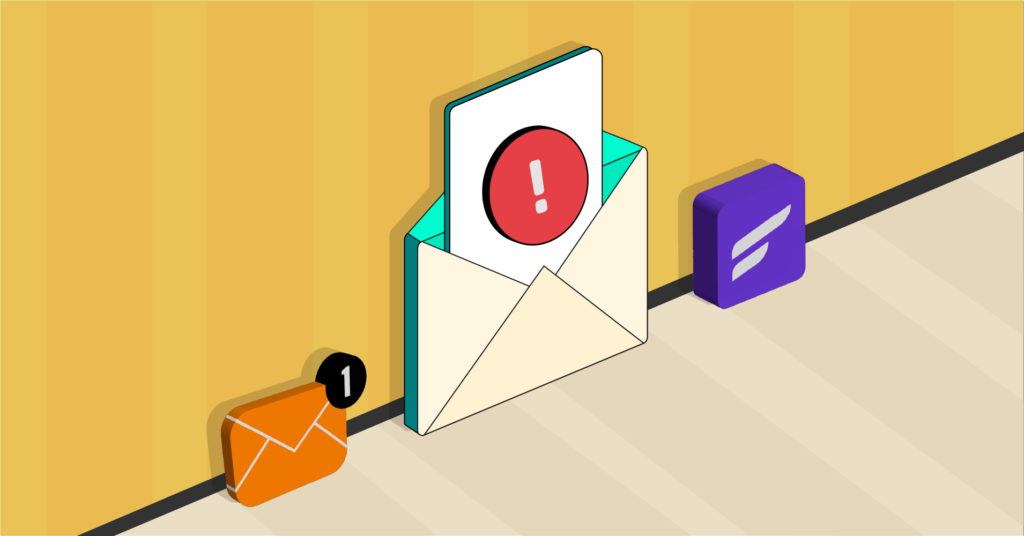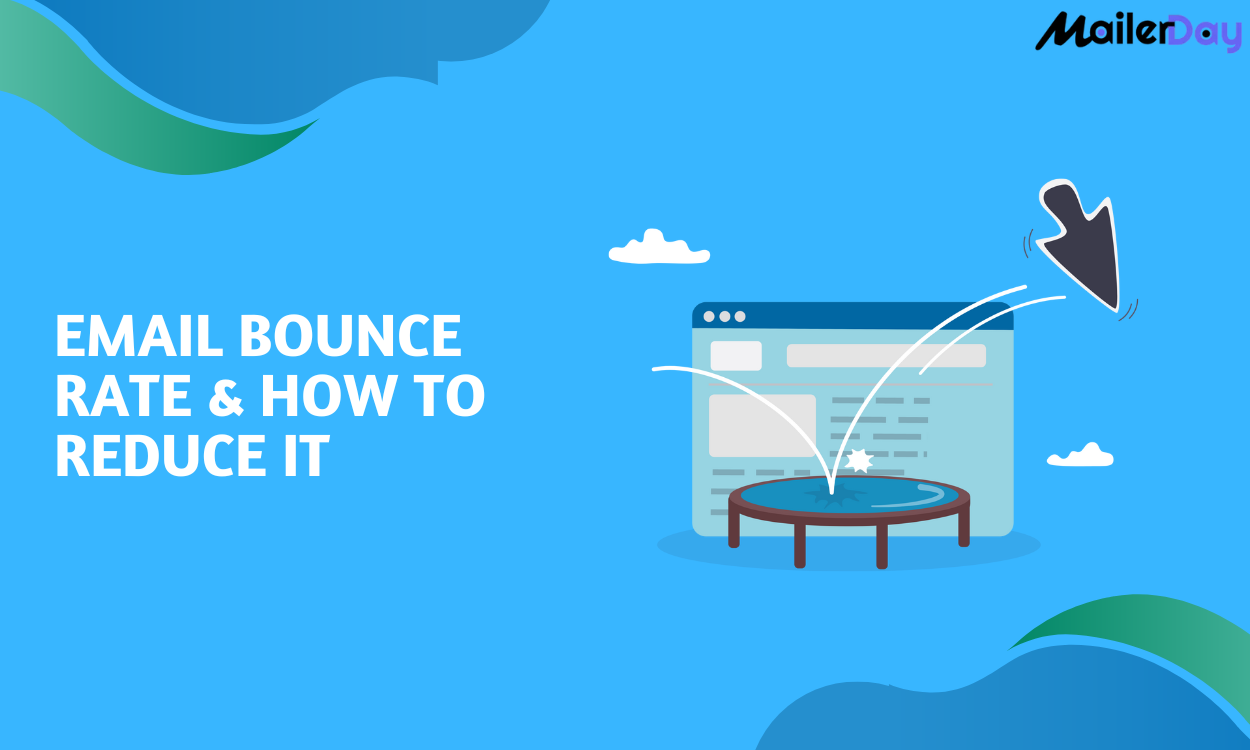Let’s assume you spend money to set up an email marketing campaign to increase your sales. But what happens if your emails will not be delivered to your intended email address? Your plan will be wasted and you will not be able to generate any sales.
This could happen because your email is bounced. Email bounce rate is a very important metric while sending emails. How can you calculate it? And most important what are the main reasons for email bounce and how can we reduce it?

Look Also: 5 Common Email Marketing Mistakes to Avoid at All Costs
What is the email bounce rate?
When your sent emails are not delivered to your intended email address. It is known as Email bounce. An email bounce rate is a metric to calculate how many emails are delivered to the right email address from the total number of sending emails. These all emails come back again to the recipient’s address.
For Example, You are writing a letter to your friend Timmy. You give the letter to your teacher to pass it on. But if your teacher tries to give the letter to Timmy, he is not there. The letter comes back to you.
There are two types of Email Bounce available to understand better. Hard Bounce and Soft Bounce
Hard Bounce: A hard bounce is a permanent failure of your email. A hard bounce of email can affect the sender’s reputation and email deliverability. This can be the cause of improperly configured email authentication protocols, wrong email addresses, and blacklisted IPs. Here, the email server did not try again to resend the email to the recipient’s email address.
Soft Bounce: A soft bounce is when an email is not delivered immediately to the intended email address. This is a temporary problem that can occur because the recipient’s email server is busy, their mailbox is full, and spam filters are in place.
Because this is not a permanent problem. The email server will try to resend the email later to be sure.
How to calculate bounce rate in email
Calculating the email bounce rate tells people about how many times your email did not reach the right address. You can follow these steps to calculate it:
- Count Bounces: Keep track of how many of your sent emails bounce back.
- Divide: Divide the number of bounced emails by the total number of emails you sent.
- Multiply: Multiply the result by 100 to get a percentage.
For example, if you sent 100 emails and 5 bounced back.
Bounce Rate = (5 / 100) * 100 = 5%
As an email marketer, you must have a lower email bounce rate for better success in delivering your emails.
What are the main Reasons for High Email Bounce rates?
There are many reasons for the high bounce rates of your emails during email marketing campaigns. As a marketer, you should always know all the key reasons for high email bounce rates. It could happen
- Sender Reputation: Poor sender reputation can lead to emails being flagged or blocked.
- SPF/DKIM/DMARC Misconfigurations: Wrong setup of authentication protocols can trigger email providers to mark emails as suspicious.
- IP Blacklisting: Sending IP is on a blacklist due to spamming
- Content Filtering: Spammy content and attachments can lead to non-delivery.
- Recipient Server Issues: Technical glitches in the server lead to failed deliveries.
- Inactive Subscribers: Sending emails to subscribers who haven’t engaged can increase bounce rates.
Always make sure you know all the reasons to identify potential issues in email marketing.
Tips to Reduce Email Bounce Rate
There are a few tips you can follow to reduce the email bounce rate during your email campaign.
Build legitimate email lists: Building email lists requires a ton of time and effort. This type of email list is legitimate and all the users know about you. Also, buying an email list can be an option but can lead to problems. These email lists can be old, wrong, and unused, hurting your emails’ delivery.
Clean up and validate the mailing list: Regularly cleaning and validating your mailing list is essential. You must regularly check your email subscriber list and remove all inactive email addresses. You can automate this process of identifying inactive emails. This helps in a better email list, higher sales, and reduced bounce rate.
Always test your email: This is a very smart decision to test your email before setting up an email campaign. This helps to prevent potential bounce issues. Two methods exist to test your email campaign dummy emails and specialized tools. You can use Mailerday an email marketing tool to test your emails. This tool helps see your emails work well and go to the right place.
Use reliable email infrastructure: Reliable email infrastructure is a great way to avoid high bounce rates. This helps to provide a strong reputation and security against spammers. You are required to authenticate your domains with SPF, DKIM, and DMARC records before you start sending.
Mailerday also provides reliable email infrastructure to authenticate your email
Write non-spammy email content: When you are writing spammy content and include a few illegal words in your content then it can be considered a bounce. You should avoid words like free money, million dollars, and money without doing anything and You also make sure to avoid adding any attachments that contain any illegal activity.
You can do A/B testing with content to find perfect content. Always test your email heading, content, and CTA by changing them regularly.
Analyze your email marketing campaign: You should always monitor your results after setting up your email marketing campaign. You should look at metrics like bounce rate, click-through rates, and conversion rates. Identify what are the major reasons for the bounce rate. Make important changes based on the identified result. Use these insights to refine your strategy for better results in the future.
Conclusion
Email bounce rate is a metric to identify how much your email is not delivered to the right place from the total email. It is very important for the sender’s reputation and email deliverability. There are many reasons for higher bounce rates like IP blacklist, sender reputation, spammy content, authenticity protocol, etc. You can follow mentioned tips to reduce the bounce rate. To reduce bounce rate, make your email list legitimate, follow all authentication protocols, analyze content, and test your email before sending it.
Mailerday is a Perfect Email Marketing Service provider to grow your business. You can either hire our Email Expert or use our email services including SMTP service, email verification, a bulletproof server, & DMCA-ignored bulletproof service. All services are affordable and have 24/7 support.
FAQ’s
Email list validation prevents hard bounces by verifying the accuracy and validity of email addresses before sending. It helps to identify invalid, inactive, and mistyped email addresses to make sure only valid addresses receive emails. This measure reduces the chances of emails bouncing back due to non-existent addresses.
Permission-based email marketing improves the chance of a higher open email rate. Because the recipients are only those who are interested in your emails. This marketing technique helps in higher engagement and lower bounce rates.
A successful email marketing strategy includes well-defined goals, targeted content, effective audience segmentation, consistent engagement, and measurable results. It focuses on delivering valuable content to the right audience at the right time. You get higher open rates, click-through rates, conversions, and lower bounce rates.
Both options email API and SMTP server can contribute to reducing bounce rates. An email API offers programmatic control and integration with your applications. An SMTP server provides direct email-sending control. Choose based on your technical needs and desired level of control.


